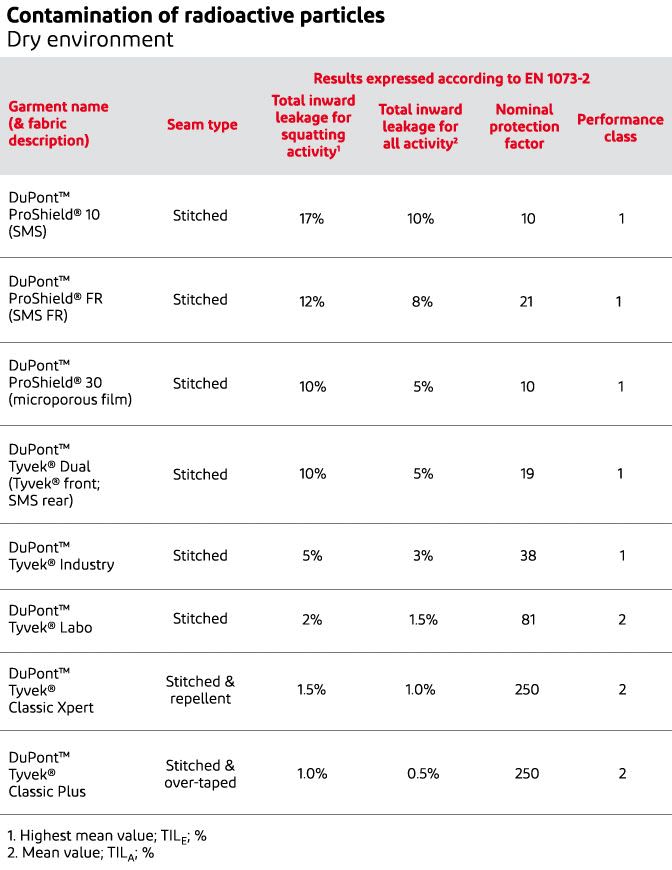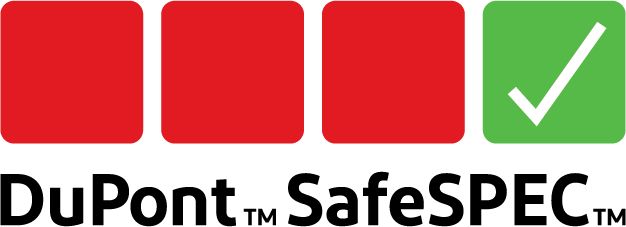Nuclear industry protection
Because there is such a broad spectrum of tasks and of radioactive contamination risks, DuPont offers a wide range of nuclear protective clothing
The tragic disaster in Japan raises questions about protection from nuclear hazards. This question can be divided into two main areas: ionizing radiation hazards and radioactive particle or liquid hazards.
Ionizing radiation hazards
The fabrics used in single-use protective garments do not provide a barrier to ionizing radiation (e.g., gamma rays, X-rays or radioactive alpha or beta particles). The standard protocol used to reduce radiation exposure would include time, distance and shielding. For garments, limited shielding may be provided by specialty garments that contain lead-based materials. DuPont does not offer any specialty garments that provide protection from ionizing radiation hazards.
Radioactive contaminated particle or liquid hazards
For hazards associated with radioactive contaminated particles or liquids, rather than blocking the radiation itself, appropriate garments are designed to minimize the penetration of radioactive materials, thereby also keeping contact with the skin and clothing worn underneath to a minimum. These garments are designed to be worn in a potentially affected area and then be promptly removed and disposed of, such that long-term exposure to the radioactive contaminated material is minimized after leaving the potentially affected area and to avoid contaminating other areas.
Chemical protective garments are intended for single use so that a cross-contamination with radioactive particles can be minimized. In general, more body coverage is better: hooded coveralls help keep clothing and hair free of radioactive materials. DuPont does offer specially designed garments that help provide protection from radioactive particles and liquids. Specific fabric types, seam configurations and garment designs should be specified to match the hazard. In addition, other appropriate PPE, such as but not limited to respirators, goggles, gloves and footwear, etc., as identified during the hazard assessment, should be used in conjunction with any garment selection.
DuPont™ Tyvek® 500 Xpert, Tyvek® 600 Plus, DuPont™ Tychem® 2000 C Standard, as well as Tychem® 6000 F Standard garments are tested according to EN 1073-2 as protective clothing against radioactive contamination.

Furthermore, since radioactive contamination can be found in wet, dry or mixed environments, DuPont has also taken these hazards into consideration.

Cut & mechanical protection
Only DuPont™ Kevlar® can protect against multiple hazards, while keeping workers comfortable. And DuPont can help guide you through the new standards, innovation possibilities and more.
Arc flash protection
DuPont™ Nomex® fabric delivers lightweight, comfortable FR protective solutions that meet or exceed global standards in arc flash, heat and flame protection and performance.
Heat & flame protection
Nomex® offers a tested and proven portfolio of protective solutions that continues to meet or exceed global standards for heat, flame and arc flash protection.
Tyvek® protective apparel
Tyvek® helps offer an ideal balance of protection, durability and comfort to employees in industrial applications and contamination control environments, including manufacturing, pharmaceutical, automotive and utilities.

Resource library
Find technical information, videos, webinars and case studies about DuPont PPE here.

